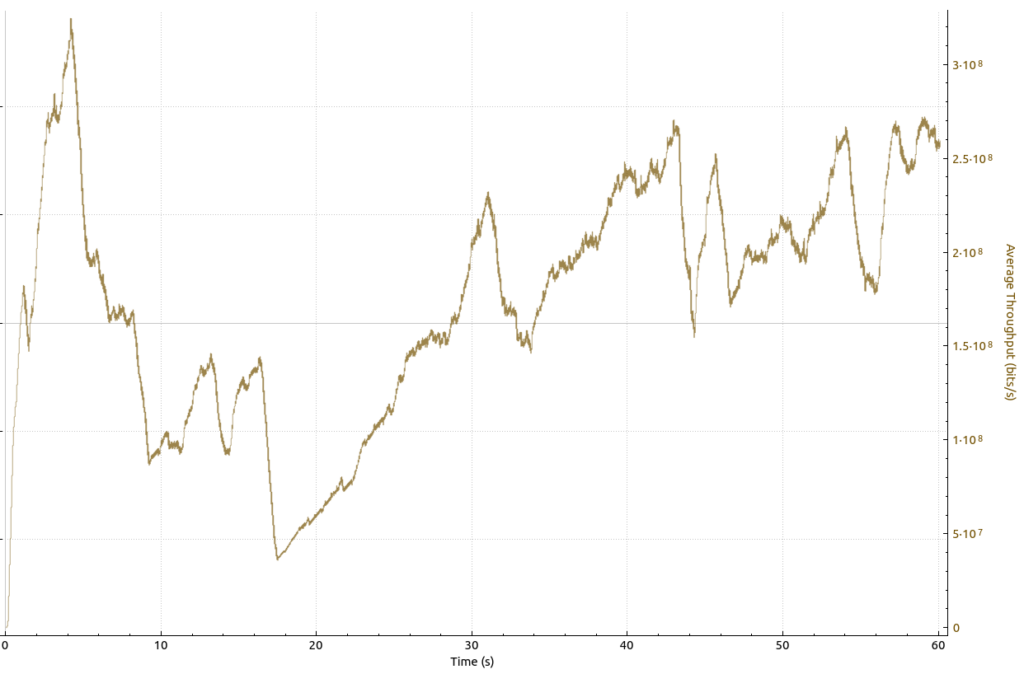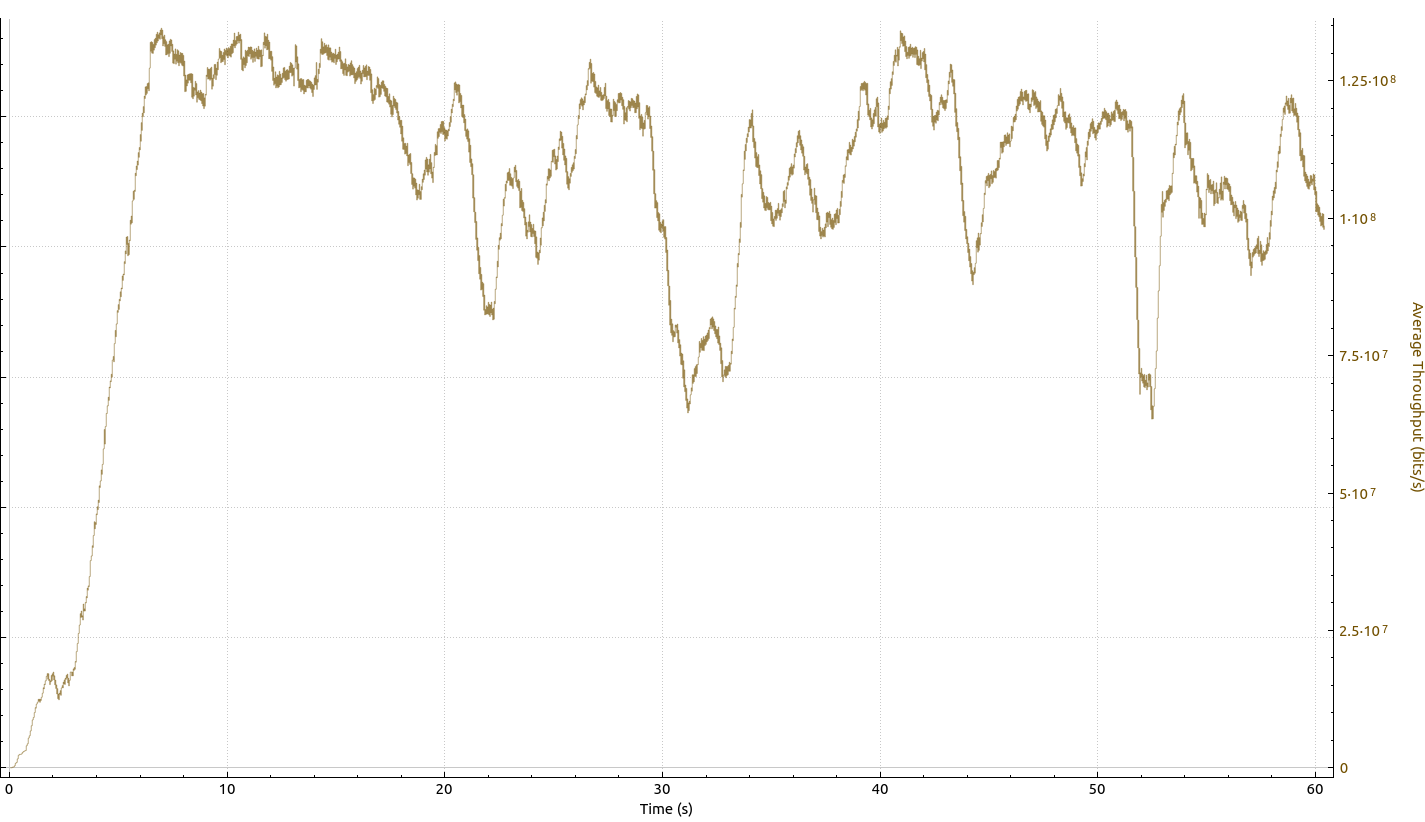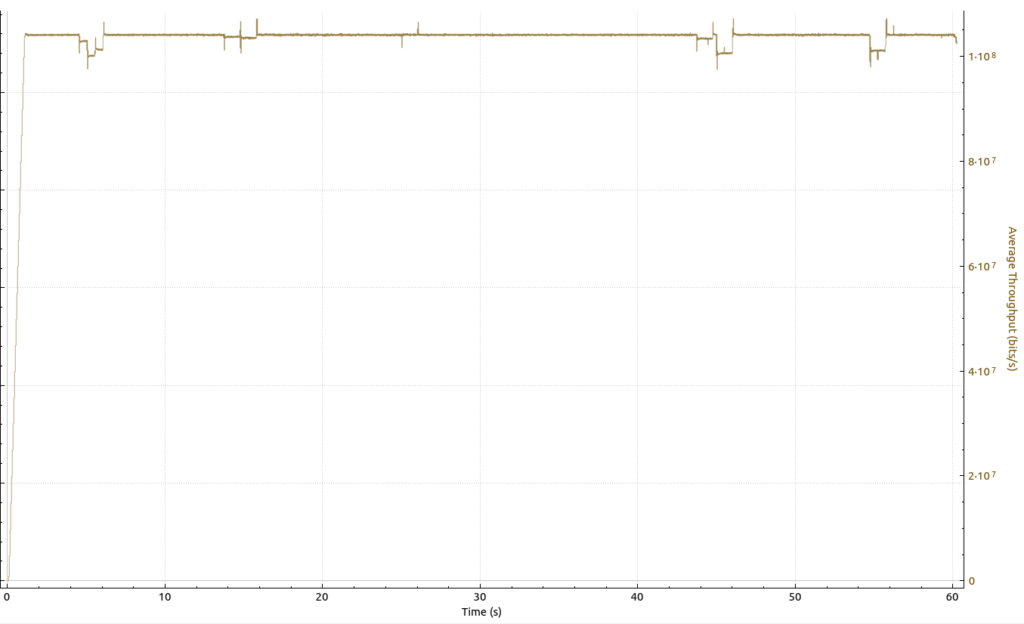In part 4 of this series, I’ve compared the TCP behavior of high speed LTE and Wi-Fi to a virtual machine in a dater center over links with round trip delay times of around 25 ms. The results were very insightful but also raised new questions that I will follow up in this post. So here’s a quick recap of what happened so far to set things into context:
For fast Wi-Fi, I went to the local university in Cologne that has an excellent Eduroam Wi-Fi deployed in many areas. There, I was able to get an iperf uplink throughput of around 500 Mbps to a virtual machine in Nürnberg. When analyzing the TCP behavior in more detail, I noticed that my notebook quite frequently hit the default maximum TCP receive window size of 3 MB of the VM in the remote data center. In other words: More would perhaps have been possible with a bigger TCP receive buffer. So I gave this another try to see what would happen.
Continue reading TCP Tracing – Part 5 – High Speed Wi-Fi and the Receive Window



